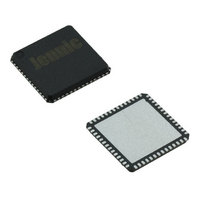JN5148-001-X NXP Semiconductors, JN5148-001-X Datasheet - Page 62

JN5148-001-X
Manufacturer Part Number
JN5148-001-X
Description
IC MCU 802.15.4 32BIT 2.4G 56QFN
Manufacturer
NXP Semiconductors
Series
JN5148r
Datasheet
1.JN5148-UG010.pdf
(99 pages)
Specifications of JN5148-001-X
Frequency
2.4GHz
Data Rate - Maximum
667kbps
Modulation Or Protocol
802.15.4
Applications
Home/Building Automation, Industrial Control
Power - Output
2.5dBm
Sensitivity
-95dBm
Voltage - Supply
2 V ~ 3.6 V
Current - Receiving
17.5mA
Current - Transmitting
15mA
Data Interface
PCB, Surface Mount
Memory Size
128kB RAM, 128kB ROM
Antenna Connector
PCB, Surface Mount
Operating Temperature
-40°C ~ 85°C
Package / Case
56-QFN
Lead Free Status / RoHS Status
Lead free / RoHS Compliant
Other names
616-1049-2
935293999531
JN5148-001-X
935293999531
JN5148-001-X
21 Power Management and Sleep Modes
21.1 Operating Modes
Three operating modes are provided in the JN5148 that enable the system power consumption to be controlled
carefully to maximise battery life.
•
•
•
The variation in power consumption of the three modes is a result of having a series of power domains within the chip
that may be controllably powered on or off.
21.1.1 Power Domains
The JN5148 has the following power domains:
•
•
•
•
•
The current consumption figures for the different modes of operation of the device is given in section 22.2.2.
21.2 Active Processing Mode
Active processing mode in the JN5148 is where all of the application processing takes place. By default, the CPU will
execute at the selected clock speed executing application firmware. All of the peripherals are available to the
application, as are options to actively enable or disable them to control power consumption; see specific peripheral
sections for details.
Whilst in Active processing mode there is the option to doze the CPU but keep the rest of the chip active; this is
particularly useful for radio transmit and receive operations, where the CPU operation is not required therefore saving
power.
21.2.1 CPU Doze
Whilst in doze mode, CPU operation is stopped but the chip remains powered and the digital peripherals continue to
run. Doze mode is entered through software and is terminated by any interrupt request. Once the interrupt service
routine has been executed, normal program execution resumes. Doze mode uses more power than sleep and deep
sleep modes but requires less time to restart and can therefore be used as a low power alternative to an idle loop.
Whilst in CPU doze the current associated with the CPU is not consumed, therefore the basic device current is
reduced as shown in the figures in section 22.2.2.1.
21.3 Sleep Mode
The JN5148 enters sleep mode through software control. In this mode most of the internal chip functions are
shutdown to save power, however the state of DIO pins are retained, including the output values and pull-up enables,
62
Active Processing Mode
Sleep Mode
Deep Sleep Mode
VDD Supply Domain: supplies the wake-up timers and controller, DIO blocks, Comparators, 32kHz RC and
crystal oscillators. This domain is driven from the external supply (battery) and is always powered. The wake-up
timers and controller, and the 32kHz RC and crystal oscillators may be powered on or off in sleep mode through
software control.
Digital Logic Domain: supplies the digital peripherals, CPU, ROM, Baseband controller, Modem and Encryption
processor. It is powered off during sleep mode.
Analogue Domain: supplies the ADC, DACs and the temperature sensor. It is powered off during sleep mode
and may be powered on or off in active processing mode through software control.
RAM Domain: supplies the RAM during sleep mode to retain the memory contents. It may be powered on or off
for sleep mode through software control.
Radio Domain: supplies the radio interface. It is powered during transmit and receive and controlled by the
baseband processor. It is powered off during sleep mode.
JN-DS-JN5148-001 1v6
© NXP Laboratories UK 2010


















